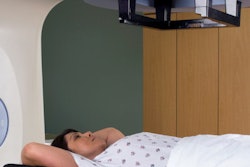Childhood cancer survivors who received radiation therapy for Hodgkin's lymphoma had a significantly higher risk of developing a second malignant tumor compared to patients who only received chemotherapy, according to an Australian study published online March 10 in the Annals of Oncology.
Almost one-fourth of the patients who received radiation therapy developed a second malignancy within 30 years. This compares to just 5.8% who received only chemotherapy.
The study analyzed the medical records of 142 children who received chemotherapy treatment only, radiation therapy only, or both treatments for Hodgkin's lymphoma. The study's goal was to determine how many children developed secondary tumors and to identify the factors that caused them. The children received their treatment between 1960 and 1999 at the Children's Hospital at Westmead or at Sydney Children's Hospital in Randwick.
Sixty-three patients received radiation therapy; 43% were younger than age 9 and 32% were girls. The majority of these patients (86%) also received some type of chemotherapy. This group was followed for at least 4.5 years, up to almost 41 years.
Seventy-nine patients, of whom 49% were younger than 9 and 25% were girls, did not receive any radiation therapy. In addition, 5% also did not receive chemotherapy. These patients were followed from eight to 40 years.
A total of 14 patients developed a secondary solid tumor. Twelve of these patients had received radiation therapy, six as part of a supplemental salvage treatment. For these 12 patients, the tumors recurred approximately 14 years following treatment, with at least 75% located within the field of radiation. Two of these patients developed a third tumor. The tumors manifested themselves predominantly as thyroid cancer and malignant melanomas, although there were single cases of chondrosarcoma, salivary gland adenocarcinoma, large-cell lung carcinoma, and rectal adenocarcinoma.
The two patients who had no exposure to radiation therapy developed Kaposi's sarcoma and thyroid cancer eight and 17 years, respectively, following treatment.
None of the 40 female patients who received either type of treatment developed breast cancer. Only 11 girls had received radiation therapy involving breast tissue, and most were prepubertal during treatment, according to co-author David Ziegler, a pediatric oncologist at Sydney Children's Hospital, and colleagues.
The two most significant factors affecting the development of second solid tumors later in life were radiation exposure during treatment and the presence of B symptoms at the time of diagnosis, such as Pel-Ebstein fever, night sweats, and/or unintentional weight loss.
Overall survival for all patients was 94.4% and was comparable for both groups. While radiation therapy is seldom used as a treatment in Australia for childhood Hodgkin's lymphoma, based on the study results, when it is used, the patient faces a 5.5-fold increased risk of developing a future cancer, the authors cautioned.



















